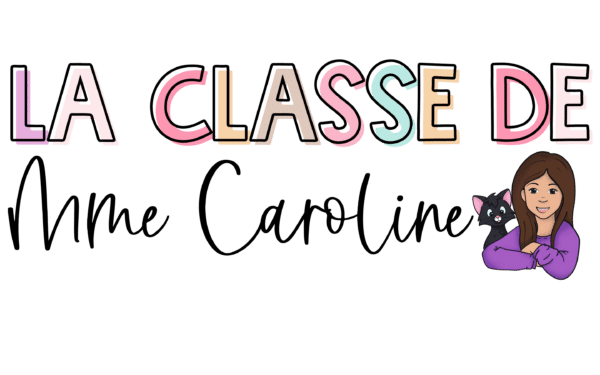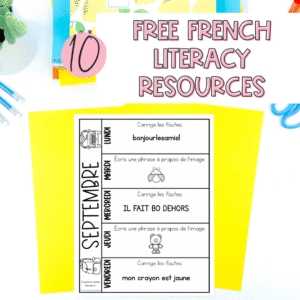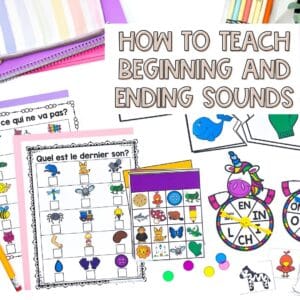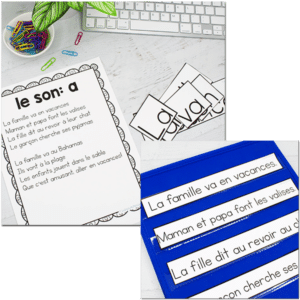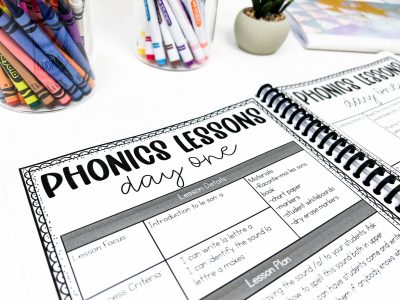I never thought I would ever teach kindergarten full time. I’ve been teaching since 2013. I saw myself as a junior teacher until I got thrown into my first LTO in grade 2/3 and I absolutely fell in love with primary. Since then, I moved around through various positions, but Kindergarten terrified me! I loved doing coverage in kinder, but I wasn’t interested in teaching it full time. This is my second year in Kindergarten and my professional views on how to teach it have changed a lot. I currently teach in a 50% French model, so I teach two classes for half a day. I’ve found a lot of schedules out there focus on a full day model with one class, so I will be providing ideas and things to consider on how to create an effective flow of the day when you have much less time with the students. If you want to read more about my kindergarten schedule, check out this post where I outline the schedule we follow.

Step 1: Look at your schedule
Questions to consider:
- Are your preps at the same time every day?
- Who is covering your preps? Is it the same person each time?
- Does your prep coverage teacher have a specialization in a subject?
- Are you changing classrooms or are the students changing classrooms?
- How do you want your class transitioning from French to English? During open play, or at the end of a block?
- How many transitions are happening throughout your day? Is there any way to minimize them?
My preps were not at the same time each day, which made planning my schedule a bit tricky. Most days, 3/5 of my preps fell during the middle block, which was helpful. Unfortunately the other two were either during the first or last block of the day. It was harder to plan my flow for those days. I am a stickler for routine – for me that means a predictable kindergarten schedule.
Luckily I had the same teacher covering all my preps. She is a music specialist, so she planned arts-based circles and centers during her time in my room. The students looked forward to her visits and loved the activities she planned.
The teachers change rooms in my school. My morning class transitioned from French to English during an open play block. They continued open play with their English teacher after I left. My afternoon class transitioned from English to French during a purposeful play block. The students would tidy up when I got there and we did a circle then some small group activities before our nutrition break.
My flow had a lot of transitions. Either from different teachers coming in or from breaks in the school day (nutrition breaks). Some schools schedule the kindergarten classes to follow a different schedule from the rest of the school, but mine is not one of them. Most of these transitions were out of my control, so I tried to make the rest of our day flow as easily as I could.
Step 2: Routine, routine, routine!
The best thing for your sanity and for your students is a predictable schedule. I try my best to build my kindergarten schedule in a way where they are doing things in the same order every day. Does this mean I do the exact same thing every day? No! But the kids know that we go in first thing in the morning, do some soft start centres, then move into circle and small-group activities before going outside early. The activities and lessons change, but the order we do things in stay the same throughout the year.
I try to do my circles and small-group activities earlier on in the day when the students are fresh and ready to learn. I tend to leave open play blocks, outdoor play and gym periods for later in the day if I can.
Step 3: What are your priorities?
I found it was really hard to focus on Math AND Language AND Open Play AND Outdoor Play AND… AND… AND… So I spoke with my team and we found ways to work together. I worked with my English OCT (teacher) partner to piggy back Math concepts with her. Generally, she did the bigger Math lessons with the class and I did smaller, simpler ones in French. The main reason for this being that with me, they have 3 roadblocks:
- A totally new concept for them
- A language they don’t really understand
- Their time with me is already reduced to half a day
I found it was easier to have my English teacher teach new concepts and I do supporting lessons and centers on the French side.
I have 2 ECE partners per class that I work with as well. I spoke with them about what their strengths are and what they’d like to focus on within the classroom. In my afternoon class, one partner enjoyed creating visual arts centers, working on the dramatic play area and sensory bins. My other partner wanted to teach ASL to the class, focus more on math and fine motor. This took a huge burden off of me, giving me more time to focus on other things, such as French Literacy.
Step 4: Think about your Circle Time
Questions to consider:
- Who will manage behaviours?
- Do you want to do a morning message?
- What do you want to focus on?
- How many circle lessons can you do in one day?
- If you can only do one, how will you divide your time?
Anybody who has taught kindergarten before knows that circle time is precious. The attention span of the students varies a lot and so does their engagement level. This time is a huge team effort, especially in the afternoon. Most of my students did very well during circle time, but some were very much not developmentally ready for it. I relied a lot on the support of my partners to help manage those students (e.g., sitting with them, taking them for walks, alternate lesson, etc.) so that I could focus on teaching my lesson while I still had the focus of the rest of the group.
I started the year doing morning messages every day, but quickly stopped that. Not because they’re not great, but because I often wasn’t organized enough to get them ready with the class transition. I originally wanted to do 2 circle lessons during the half day – one Math and one Literacy, but that didn’t work out (see step 6) so instead I tried to have a predictable schedule for my lessons:
- Monday was the introduction to our new letter of the week (with a story)
- Tuesday was focused more on math
- Wednesday was a review of our letter of the week, letter hunt and vocabulary building
- Thursday was a math lesson
- Friday was read-aloud day
Step 5: Think about your Small-Group Centers
Now this is where not all teachers see eye to eye. I think it is very important to do small-group centers. These are the reasons I feel this way:
- I don’t think there is always much academic learning going on during blocks of open play
- Many students thrive on small-group time, learn a lot and enjoy it
- Kids need a mixture of inquiry-based learning and traditional learning. I’ve seen the decline in certain abilities in my years teaching primary. I have had many students coming into Grade 2 or 3 who still are having significant difficulty writing letters, distinguishing between upper case and lower case, etc. These concepts need to be explicitly taught
- Some students never explore different areas of the classroom without prompting to do so. Not because they can’t do the activity, but because they prefer not to.
Because I’m lucky enough to have 2 ECE partners with me, we are able to split the class into 4 groups and have 3 groups led by an educator. The 4th center is always something self-explanatory where the students don’t need support – usually something relating to fine motor or arts. The other 3 centers are planned by each educator. We split it up by subject; I would do a French Literacy center, one ECE would do Math and the other ECE would do Science. The students loved this time and were engaged for long periods of time – much longer than I thought they would be! They rotate through centers throughout the week. They do one center per day.
Step 6: Be open to change!
This one is probably the most important one. You can spend all summer working on a schedule, considering every aspect of it until you think it’s perfect. Then you meet your class and what you wanted to do really doesn’t work. That’s normal! Like I mentioned earlier, I wanted to do 2 circles per class. I realized really quickly that that wasn’t going to happen unless I wanted to pull all of my hair out. Our schedule also moved around a bit based on when we could sign up for a gym period and as the weather changed. When it’s the middle of winter, suddenly, the kids aren’t as interested in learning outdoors for long periods of time.
Come up with a basic plan before school starts – a skeleton plan and adjust during the first few weeks. Don’t forget – it’s OK if things don’t go well the first time and it’s OK to try a few more times before changing your approach. The students grow and develop a lot throughout the year, so there may be things that you found too difficult to do in September, but may work very well in April.
My next blog post will be a breakdown of my kindergarten schedule under the 50% French (half day) model. Check back next week for more details!


